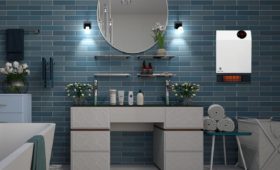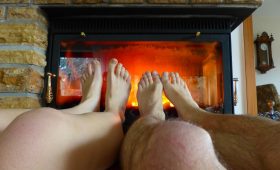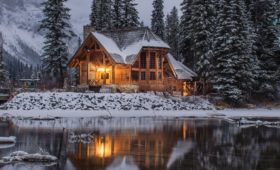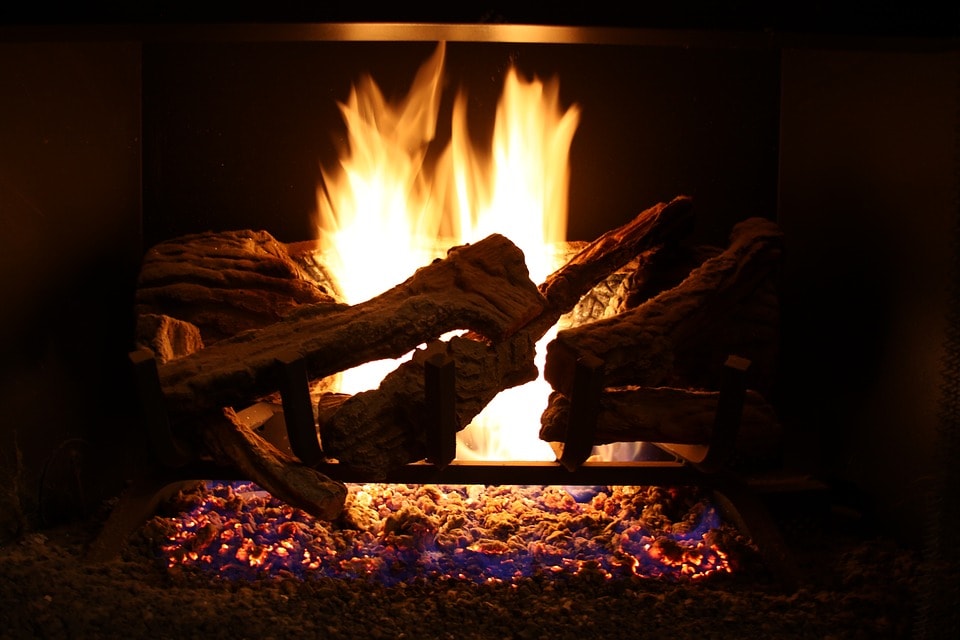 Traditional wood fireplaces can make your home very cozy, but maintaining them is a mess. Well, here’s where fireplace gas logs come into play! While setting them up can be quite pricey, it can be well worth it for you in the end!
Traditional wood fireplaces can make your home very cozy, but maintaining them is a mess. Well, here’s where fireplace gas logs come into play! While setting them up can be quite pricey, it can be well worth it for you in the end!
Table of Contents
Best Vented and Ventless Gas Logs
Why Choose Fireplace Gas Logs?
Why choose gas logs over traditional wood logs for your fireplace? Well, gas logs boast several benefits, including:
- Excellent ambiance. The flame produced by the best gas logs out there will be pretty difficult to distinguish from the flame of wood.
- Reduced costs. Fireplace wood can be expensive. Sure, it can be found for free, but if you don’t have a source of firewood nearby, gas logs are going to be more cost-efficient in the long run.
- Reduced maintenance. There is still some maintenance to be done with gas logs (which we’ll talk about a bit later), but it’s nowhere near what you’d have to do if you used firewood.
- Ease of use. The only thing you need to do to power gas logs is to supply the burner with natural gas or liquid propane. Running a line will cost you quite a bit, but once it’s in place, using gas logs will be very easy.
What Type of Gas Logs to Choose?
Before proceeding to our roundup, we’d like to overview the main types of fireplace gas logs.
First off, we have vented gas logs and ventless gas logs. Then, we also have gas logs that run on natural gas or liquid propane. You’d need to base your choice on your budget, existing fireplace setup, and whether you have a gas line already.
With that said, let’s overview what each of the types has to offer.
Vented Gas Logs vs Ventless Gas Logs
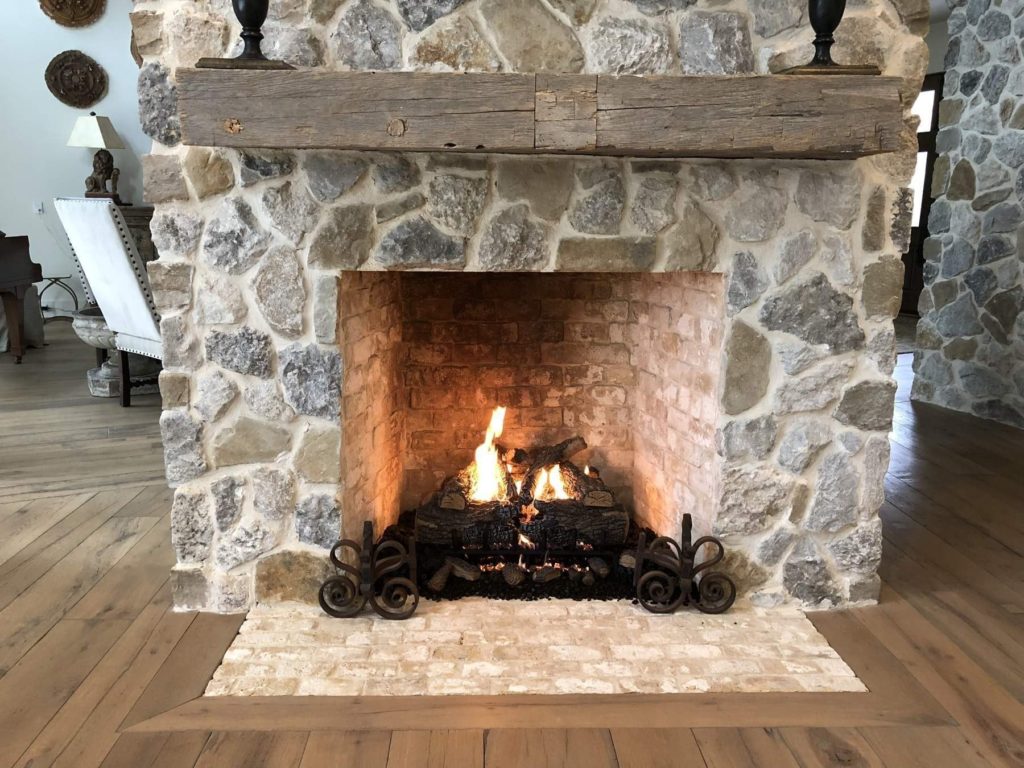
Featured Product: 24″ Charred Oak Real Fyre Gas Logs
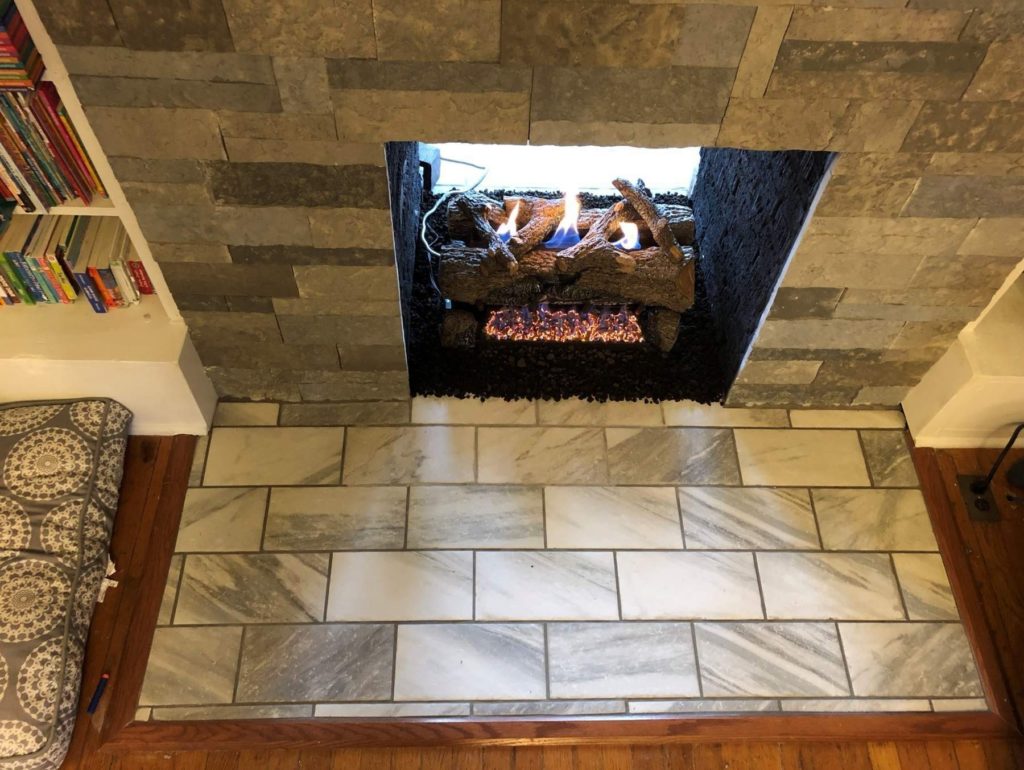
Featured Product: 24″ Ventless Evening Fyre Charred Real Fyre Gas Logs
First come vented and ventless gas logs. These are also called yellow flame logs and blue flame logs by the Chimney Safety Institute of America (CSIA).
Vented or yellow flame gas logs require that the fireplace have a flue so that the combustion byproducts can escape. Vented flame gas logs may be used in an approved wood fireplace.
Among the benefits of vented gas logs are the following:
- They produce a strong and realistic fire that’s quite difficult to distinguish from real wood fire.
- They are generally less expensive than ventless logs.
- You do not need to have a CO detector in your home since whatever is produced by these logs goes up the chimney.
The disadvantages of vented gas logs are as follows:
- Vented gas logs are much less efficient than ventless logs. That’s because much of the produced heat escapes through the flue.
- Vented logs generate soot and carbon. Since these get deposited in the chimney, you will need to do occasional cleanups, just like with a regular fireplace.
- You need to have a vented fireplace for this kind of gas logs.
In contrast, ventless gas logs do not require your fireplace to have vents or flues. As such, the advantages of ventless gas logs are as follows:
- You have a wider range of options for the logs’ placement.
- Ventless gas logs are more efficient (nearly 100% according to InterNACHI) since the produced heat doesn’t escape your home through a flue. Not only that, ventless gas logs burn hotter, as claimed by the CSIA.
- Ventless gas logs produce much fewer pollutants than vented gas logs, which is why they can be used without vents.
The disadvantages of ventless gas logs are as follows:
- They produce less realistic, blue-ish flame.
- You will need to have ODS (oxygen depletion system) or CO detectors in your home to ensure air safety.
- Ventless gas logs, while very efficient, aren’t 100% clean – as InterNACHI warns, they do produce CO and airborne particulates which are dangerous for humans and pets. Plus, as InterNACHI points out, the integrated sensors are typically located near the floor where cool and oxygen-rich air is abundant, whereas combustion gases rise toward the ceiling.
- Ventless gas logs produce water vapor. Water vapor can cause mold growth, damage sensitive structures, and cause health issues in at-risk individuals.
- Ventless gas logs are illegal in certain areas, such as California or Massachusetts. Before buying a ventless gas log set, you will need to make sure that it’s not forbidden by local laws.
- Ventless gas logs are required to be installed by a professional in most areas.
Natural Gas vs Liquid Propane
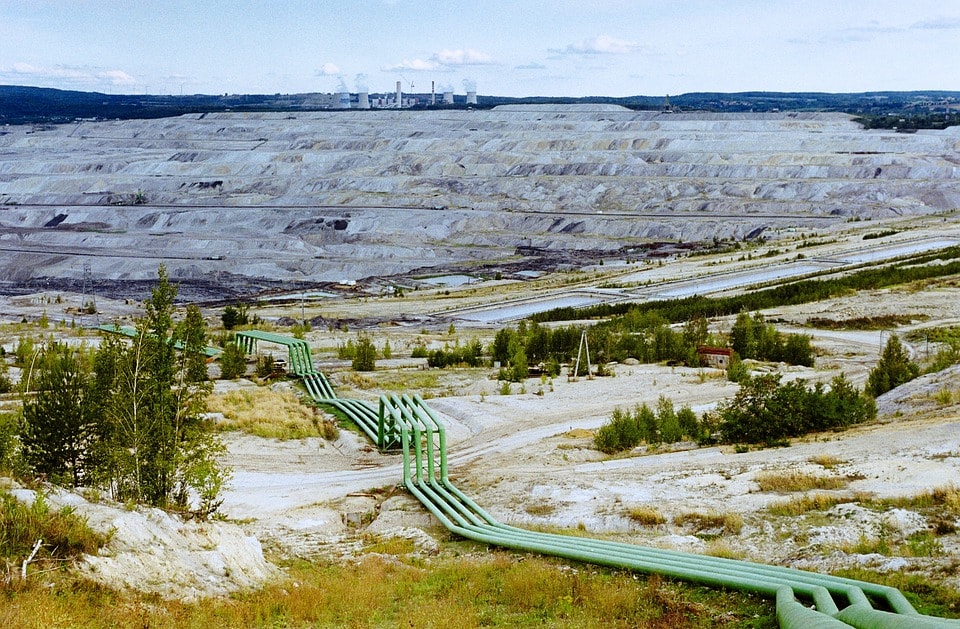
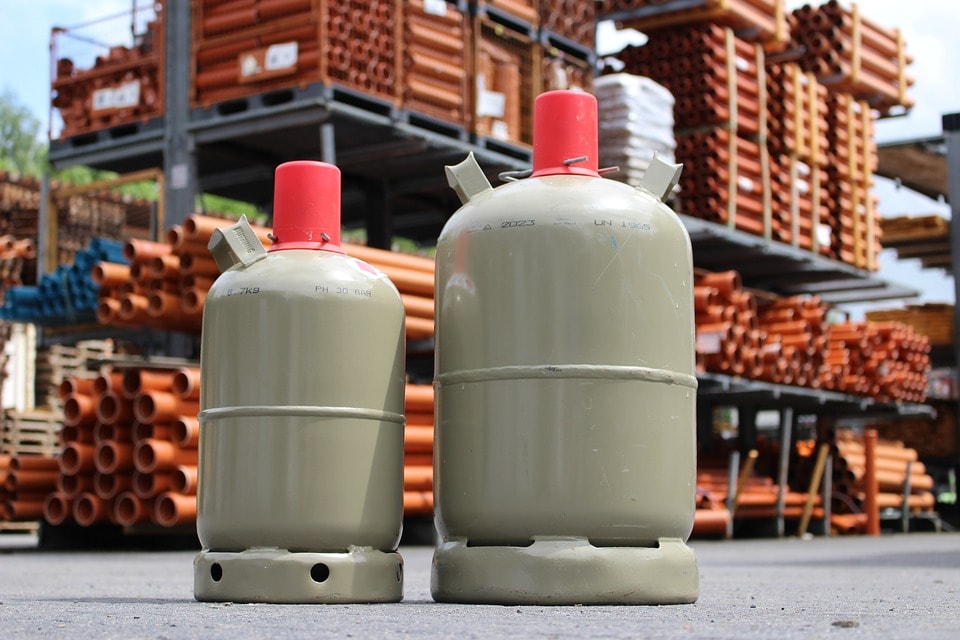
Gas logs can also either run on natural gas or liquid propane. Each fuel type has its advantages and disadvantages.
The pros of natural gas are:
- Natural gas usually has a lower purchase price.
- It is lighter than air and easily dissipates into the atmosphere after combustion.
- If you have a gas line in your house already, then natural gas logs would be a more cost-efficient option for you.
The cons of natural gas are:
- Your fireplace needs to be hard-lined to your gas line. If your fireplace isn’t already hard-lined, then you’ll need to do it to be able to use natural gas logs.
- Natural gas is less efficient than propane – one cubic foot of natural gas contains 1,030 BTUs of energy, while one cubic foot of propane contains 2,516 BTUs, over twice as much.
- The availability of natural gas may be limited in some areas.
In contrast, the pros of liquid propane are:
- More energy-efficient.
- No need for gas lines, which is great if you don’t have any gas appliances at home.
- Can be used in areas with limited availability of natural gas.
Finally, the cons of liquid propane logs are:
- Operating liquid propane logs requires the installation of a propane tank outside the home.
- You would need to contact a propane dealer to have your propane tank refilled.
With the pros and cons of both gas log types in mind, we’d say that you should choose the type which your home is better-equipped for at the moment. If you don’t have a gas line at home, then propane logs would be more cost-efficient for you since you wouldn’t need to install a gas line to use them.
The 12 Vented and Ventless Fireplace Gas Logs
SureHeat SH18DBNG Dual-Burner 18” Log Set – Vented
 While very inexpensive, this log set is capable of producing quite a spectacle. It not only delivers a good-looking fire but also ensures that there is plenty of it with its U-shaped dual-burner setup.
While very inexpensive, this log set is capable of producing quite a spectacle. It not only delivers a good-looking fire but also ensures that there is plenty of it with its U-shaped dual-burner setup.
And, of course, this set wouldn’t be complete without its decorative base with glowing embers and the 6 detailed & hand-painted cement logs that mimic hickory.
Pros
- Value for money.
- The 2 burners produce plenty of fire.
- 50-60k BTU heat output.
Cons
- Manual match-style ignition.
- Not the most informative instructions.
R. H. Peterson Golden Oak Designer Plus Real Fyre Gas Logs – Vented
 R. H. Peterson makes some of the best gas log sets out there, albeit for a higher price. The Golden Oak Designer Plus is no exception.
R. H. Peterson makes some of the best gas log sets out there, albeit for a higher price. The Golden Oak Designer Plus is no exception.
The centerpiece of this set is the included oak-like gas logs with hand-painted details and holes in the top to make the fire more visible. You also get an artificial base that mimics embers when the burner is on.
Remarkably, you have log size options ranging from 12 to 60 inches, and you may also choose between LP and natural gas burners. To top it off, you may choose the desired control system, starting from match-light and ending with electronic ignition, and also an outdoor or indoor burner.
Pros
- Various log size options, from 12″ to 60″.
- Wide range of control options.
- Natural gas and LP variants.
Cons
- A bit expensive.
R. H. Peterson Split Oak Designer Plus Real Fyre Gas Logs – Vented
 This log set doesn’t differ from the Golden Oak Designer Plus at the basics – you get the same burner options, and you can choose between LP and gas.
This log set doesn’t differ from the Golden Oak Designer Plus at the basics – you get the same burner options, and you can choose between LP and gas.
What differs is the log design. The Split Oak Designer Plus set comes with artificial logs that look just like real split oak, which may appeal to some people a little bit more. The level of detail here is also quite great.
Pros
- Rustic design.
- A good range of log size options.
- Many control options.
- Natural gas and LP variants.
Cons
- A little pricey.
R. H. Peterson Charred Oak Real Fyre Gas Logs – Vented
 As the name suggests, this log set includes charred oak-like gas logs.
As the name suggests, this log set includes charred oak-like gas logs.
To ensure a better view of the fire and a more natural vibe, the bottom front is as if burnt through. This little detail makes this the most likable log set of all the vented sets we overviewed.
And once again, you are getting the same burner and fuel options as with other R. H. Peterson log sets.
Pros
- Beautiful charred look.
- A pretty wide range of log size options.
- Plenty of control options.
- Natural gas and LP variants.
Cons
- Pricey
R. H. Peterson Gnarled Split Oak Real Fyre Gas Logs – Vented
 The Split Oak set was pretty rustic, but the Gnarled Split Oak kicks up the rough vibe a notch with its sharper-angled logs. Aside from that, the logs in this set are a little bit brighter, which may make it a better option for lightly-colored interiors.
The Split Oak set was pretty rustic, but the Gnarled Split Oak kicks up the rough vibe a notch with its sharper-angled logs. Aside from that, the logs in this set are a little bit brighter, which may make it a better option for lightly-colored interiors.
With that said, unlike other R.H. Peterson vented sets, you are getting only 3 size options here, though you are still getting plenty of burner control options.
Pros
- Rough and rustic design.
- Many control options.
- Natural gas and LP variants.
Cons
- Quite expensive.
- Only 3 log sizes.
R. H. Peterson Charred Mountain Birch Real Fyre Gas Logs – Vented
 Finally, we have the beautiful Charred Mountain Birch log set with plenty of light-color accents.
Finally, we have the beautiful Charred Mountain Birch log set with plenty of light-color accents.
While we liked the Charred Oak set more due to its more detailed and natural look, we think that this gas log set is going to be an excellent option for brightly-colored interiors.
Needless to say, you are again getting the same burner and fuel options as in other R. H. Peterson sets, but you also have only 4 log size options.
Pros
- Excellent for brightly-colored interiors.
- Many control options.
- Available in natural gas and LP variants.
Cons
- Pricey
- Only 4 log sizes.
R. H. Peterson Charred Alpine Birch Real Fyre Gas Logs – Ventless
 The Charred Alpine Birch log set is very similar to the Charred Mountain Birch set overviewed above. This set is likewise great for bright interiors, with the main difference being that you need an approved firebox to use it.
The Charred Alpine Birch log set is very similar to the Charred Mountain Birch set overviewed above. This set is likewise great for bright interiors, with the main difference being that you need an approved firebox to use it.
This set comes with many control options as well, but unlike the previously reviewed R. H. Peterson sets, you don’t have the very inexpensive match-light option. As a result, you’ll have to have a bigger budget to buy this log set even with its cheapest burner.
Pros
- Great for brightly-colored interiors.
- A good number of control options.
- Available in natural gas and LP variants.
Cons
- Quite expensive.
- Only 4 log size options.
R. H. Peterson Foothill Split Oak Real Fyre Gas Logs – Ventless
 The first eye-catcher in the Foothill Split Oak log set is the beautiful brown hue of the logs which should be excellent for not too dark interiors.
The first eye-catcher in the Foothill Split Oak log set is the beautiful brown hue of the logs which should be excellent for not too dark interiors.
Not only that, but this log set is only available with remote ignition systems. These make this log set very expensive, but the added convenience may be worth it for you.
But unfortunately, this log set will only be suitable for small- to mid-size fireboxes since only 3 sizes are available for it. This is not too big of a downside, but you’re still a bit limited.
Pros
- Beautiful brown hue.
- May be controlled remotely.
- Available in natural gas and LP variants.
Cons
- Very expensive.
- Only 3 log sizes.
SureHeat Mountain Vernon Oak 18” Log Set – Ventless
 If you are on a tight budget, then the SureHeat Mountain Vernon Oak log set may be excellent ventless option for you. It’s not the greatest in terms of quality, but it’s pretty nice for what you are paying for.
If you are on a tight budget, then the SureHeat Mountain Vernon Oak log set may be excellent ventless option for you. It’s not the greatest in terms of quality, but it’s pretty nice for what you are paying for.
Interestingly, the included manual-ignition burner features an integrated sensor. While you should install additional ODS and CO detectors at home, this thing may still be able to add a little bit to your home’s safety.
This log set shares the dual-burner setup with the vented SureHeat set we’ve reviewed at the beginning. While the flame obviously won’t be the same, you should be getting some remarkable fire play from this thing.
Pros
- Inexpensive.
- Integrated oxygen sensor.
- Powerful dual-burner setup.
Cons
- Produces a foul odor in the first couple of uses.
- Not the greatest quality.
R. H. Peterson Foothill Oak Real Fyre Gas Logs – Ventless
 The Foothill Oak log set is very similar to the Foothill Split Oak log set we’ve reviewed earlier. You have the same selection of burners, log sizes, and fuel options, but the logs are different.
The Foothill Oak log set is very similar to the Foothill Split Oak log set we’ve reviewed earlier. You have the same selection of burners, log sizes, and fuel options, but the logs are different.
While the Foothill Split Oak set looked more appealing to us, we should praise the Foothill Oak set for its excellent level of detail. It’s a bit too rough for our taste, but the effort of R. H. Peterson is nonetheless remarkable.
Pros
- Excellent level of detail.
- Can be controlled remotely.
- Natural gas and LP variants.
Cons
- Very expensive.
- Only 3 log size options.
R. H. Peterson Ventless Valley Oak Real Fyre Gas Logs – Ventless
 The Valley Oak log set is a good option if you want an inexpensive R. H. Peterson set. While it’s not the only R. H. Peterson ventless set on the list that has the cheap option of a manual burner, it’s much less expensive than others.
The Valley Oak log set is a good option if you want an inexpensive R. H. Peterson set. While it’s not the only R. H. Peterson ventless set on the list that has the cheap option of a manual burner, it’s much less expensive than others.
With that said, you only have 2 burner options with this thing, which is a bit lackluster.
The logs are beautiful though with their detailed dark bark and brighter core. We feel that this set is going to work great with interiors that are rich in darker accents.
Pros
- Not too expensive.
- Great for darker interiors.
- Natural gas and LP variants.
Cons
- Only 3 log sizes.
- Only manual and basic remote pilots are available.
R. H. Peterson Ventless Evening Fyre Split Real Fyre Gas Logs – Ventless
 Finally, we have this extremely detailed ventless log set. R. H. Peterson has done a great job making the logs look like naturally split logs – the details are just insane in this set.
Finally, we have this extremely detailed ventless log set. R. H. Peterson has done a great job making the logs look like naturally split logs – the details are just insane in this set.
To top it off, you have 4 burner options to choose from, and, of course, a selection of natural gas and LP burners. This thing’s a bit expensive as well, but it’s a great buy for the money.
Pros
- Excellent attention to detail.
- Great for darker interiors.
- A good number of control options.
- Natural gas and LP variants.
Cons
- Very expensive.
- Only 4 log sizes.
Who Makes the Best Gas Logs?
One way to ensure that you are buying a good gas log set is to choose a reputable brand. Among the brand suggestions we’d like to make are:
- R. H. Peterson Co. The vast majority of the overviewed gas logs are manufactured by this company (or its brand Real Fyre, to be more precise). These guys offer a wide selection of gas logs, as well as plenty of accessories for them.
- Sure Heat Company. This company started its gas logs by Michael Mulberry since 1980. Most of its gas logs are affordable and are great option for small homes.
- Empire Comfort Systems. Empire Comfort doesn’t make log sets itself, but its brands American Hearth and White Mountain Hearth From them, you can find not only log sets but also fireboxes for ventless logs.
- Monessen. Monessen appears to be more focused on ventless log options. Aside from that, they have a great selection of ventless fireplaces and fireboxes.
How to Buy the Right Gas Logs for Fireplace?
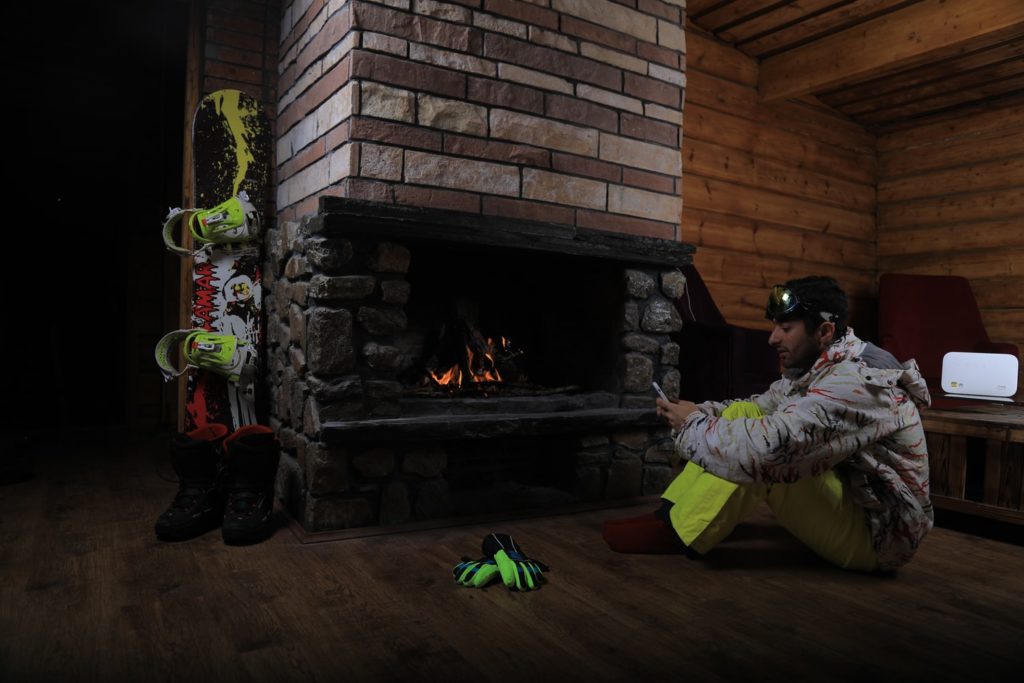
It doesn’t really matter which brand you choose – it’s much more important that the particular fireplace gas log set satisfy your needs.
With that said, we want to guide you through the key things that you should consider when looking for fireplace gas logs.
Log size
First comes the size of the logs, which simply is their length in inches.
Hansen Wholesale (where we’ve picked most of the overviewed gas logs from) provides you with minimal fireplace dimensions for each picked log size under the SIZE CALCULATOR tab.
When picking log size, make sure that you are leaving at least 2 inches of clearance from the right and left of the log set so that you don’t damage the burner or the fireplace walls.
Besides, if your fireplace gets narrower/lower at the rear, then you should take the back measurements over the front. It doesn’t matter if your fireplace has a huge fire opening – if there’s not enough room in the back and you choose a log size based on the front measurements, you probably won’t have enough clearance in the rear.
Ignition system
The second thing to consider in fireplace gas logs is their ignition system. There are several types of ignition systems to choose from, some more convenient and versatile than others.
Below are the most common ignition systems used in gas logs.
No-pilot ignitionNo-pilot ignition systems are also called match-light systems. Because they don’t have a safety pilot, you need to start the fire by holding a lit match inside the fireplace just above the burner.
Match-light gas logs are the cheapest out there, but they aren’t legal in some areas. Not only that, but they aren’t the most convenient and safest out there since you have to deal with fire and matches.
Keep in mind that liquid propane always requires a safety pilot, so you won’t find no-pilot propane logs out there.
Manual pilotGas logs with manual pilot ignition systems have a pilot that’s lit all the time. The pilot can be turned off, but it’s usually done during the off-season.
Gas logs with manual pilots have a knob – if the pilot is lit, then turning the knob will produce fire.
A little bit more expensive than match-light sets, manual pilot sets are reasonably convenient since you don’t have to light any matches.
Keep in mind that manual pilots aren’t compatible with remote controls. If you want remote controls, then you’ll have to opt for fireplace gas logs with remote ignition systems.
Basic remoteGas logs with remote ignition systems can be controlled at a distance via remote control transmitter, as well as an optional wall switch.
Usually, the transmitter and receiver are battery-operated. Wall switches connect to the pilot valve via a small millivolt valve. One thing to note here is that gas log wall switches typically aren’t wired to home electricity.
Remote gas logs can still be controlled manually, just like manual pilot gas logs.
Variable remoteVariable remote ignition systems allow you to control the height of the flame from afar. Gas logs with variable remote ignition have remotely-adjustable valves that run on battery power.
Gas logs with variable remote ignition are the second most expensive on the market after electronic ignition fireplace logs.
Electronic ignition remoteFireplace gas logs with electronic ignition remote systems are a step-up from variable remote systems. They have the same functionality as variable remote systems.
The key feature of electronic ignition sets is that the pilot is turned off electronically when the logs aren’t in use. In gas logs with other ignition systems, the pilot runs constantly.
By turning the safety pilot off, electronic ignition systems allow you to save gas, and you also won’t be hearing the pilot’s noise while the logs aren’t used.
Heat output
If you are worried about heating more than aesthetics, then carefully consider the heat output in the desired gas logs for fireplaces as well. Usually, the heat output of gas logs is measured in BTU.
Below is a BTU-to-room-size chart according to Lowes:
BTU chart for rooms with an 8 feet ceiling
| Width/Length | 12 ft | 18 ft | 24 ft | 30 ft | 36 ft |
| 12 ft | 5,184 | 7,776 | 10,368 | 12,960 | 15,552 |
| 18 ft | 7,776 | 11,664 | 15,552 | 19,440 | 23,328 |
| 24 ft | 10,368 | 15,552 | 20,736 | 25,920 | 31,104 |
| 30 ft | 12,960 | 19,440 | 25,920 | 32,400 | 38,880 |
| 36 ft | 15,552 | 23,338 | 31,104 | 38,880 | 46,556 |
BTU chart for rooms with a 10 feet ceiling
| Width/Length | 12 ft | 18 ft | 24 ft | 30 ft | 36 ft |
| 12 ft | 6,480 | 9,720 | 12,960 | 16,200 | 19,440 |
| 18 ft | 9,720 | 14,580 | 19,440 | 24,300 | 29,160 |
| 24 ft | 12,960 | 19,440 | 25,920 | 32,400 | 38,880 |
| 30 ft | 16,200 | 24,300 | 32,400 | 40,500 | 48,600 |
| 36 ft | 19,440 | 29,160 | 38,880 | 48,600 | 58,320 |
One thing to keep in mind here is that determining the required BTUs for vented gas logs is difficult since much of the heat is lost to the chimney. If choosing vented gas logs, you may want to get a little more BTUs.
Also, every ventless firebox has a limit of allowed BTUs. If your firebox is factory-built, make sure to consult its manual to find out how many BTUs it has been designed for.
Outdoor vs indoor
Gas log sets’ burners can be designed for outdoor and indoor use. The key feature of outdoor burners is that they are usually made from stainless steel which can withstand outdoor elements without damage and rusting. Due to their higher durability, outdoor sets may be a little more expensive.
Keep in mind that ventless systems usually don’t have outdoor burners.
See also: Best Wood Deck Fire Pit: 10 Safe Fire Pits for Wooden Deck PatioGas Log Cost, Maintenance, Installation
Fireplace gas log cost
Gas log price
Gas logs could cost you anywhere from around $200 to $1,500, perhaps even more. Mostly, this depends on the kind of the selected burner. Logs separately cost around $100-400, depending on the quality and level of detail.
Gas log installation price
According to Angie’s List, installing a gas line for either vented or ventless gas logs costs $500-$2,500, albeit installing ventless logs often costs $200 more. Expect to pay more if your fireplace is in a difficult spot (e.g. in an interior wall).
Costs of using gas logs
To calculate the cost of using gas logs, let’s address the guide provided by Hansen Wholesale.
In short, to calculate how much it will cost you to run LP gas logs, use this formula:
Gas log BTU / 91,500 BTU/gallon x price per gallon LP
As an example, Hansen Wholesale brings up the following:
40,000 BTU / 91,500 BTU/gallon x $2.536/gallon = $1.11/hour
Note that 91,500 BTUs is the amount of energy contained in 1 gallon of LP.
A similar formula is used for natural gas:
Gas log BTU / 100,000 BTU/therm x price per therm
And the brought up example is:
40,000 BTU / by 100,000 BTU/therm x $1.368/therm = $0.55/hour
Here, 100,000 BTUs is the amount of energy in 1 therm of natural gas.
If you are interested in the calculations, then check out Hansen Wholesale’s guide we referenced earlier.
Of course, consider local LP or natural gas prices when doing calculations. How much using gas logs will cost will depend on local prices, as well as on how often you’ll be running your fireplace.
Fireplace gas log maintenance
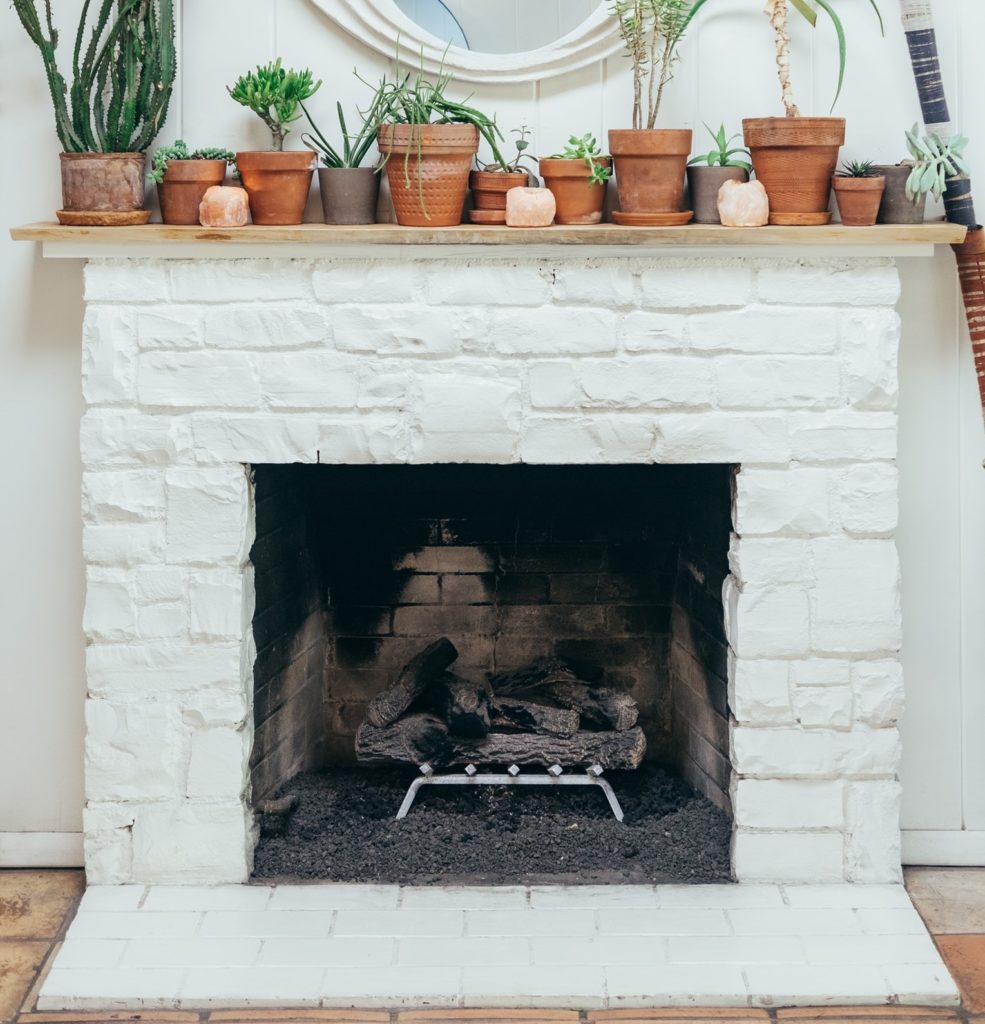
Fireplace gas log maintenance involves three things – safety inspection, fireplace cleanup, and cleaning the gas logs.
Safety inspection: A safety inspection should be performed by a certified HVAC technician. According to Angie’s List, a technician should inspect gas logs once a year, and a safety inspection will cost you about $100. You may have your fireplace inspected before each burn season, for example.
Fireplace cleaning: To clean your gas fireplace, do the following:
- Turn the burner off and let the logs cool down.
- Grab a handheld vacuum, a fireplace cleanser, and a bristle brush (or toothbrush).
- If your fireplace has a glass cover, clean its both sides with a foaming fireplace cleanser. Spread the cleanser with a soft cloth and let it sit for around 15 minutes. Finally, wipe the cleanser off with a clean cloth.
- Remove any debris from the burner. To do this, scrub the burner with your brush and then remove the debris with your vacuum cleaner.
Gas log cleaning:
- You can do the log cleaning separately or together with the fireplace cleanup. Either way, make sure that the logs are cool before taking them out.
- Remove the gas logs from the fireplace. Be careful not to let any soot get onto your floors or carpets. You may wrap the logs in an old bedsheet just to be safe.
- Take the logs out of your home.
- Remove the soot from the logs with your brush. You may then vacuum the logs to remove any debris from them.
Fireplace gas log installation
Your gas log set should come with its own installation instructions, so follow them. Below is a general overview of the installation process, and it may not fully apply to your fireplace gas log set.
Here’s how to install gas logs in your fireplace:
- Make sure that your fireplace can take the heat produced by the set. If you have a masonry fireplace approved for wood burning, then you may use it for gas logs.
- Remove the old log set.
- Thoroughly clean your fireplace. Make sure that no soot or ashes remain in it. You may want to hire a professional to check whether your chimney will accommodate a gas unit, but this could cost you $100-$150 according to Angie’s List.
- Connect your burner to the propane or gas line. If you don’t have a line, then you’ll need to have it installed by a professional first.
- Install the new grate in place.
- Install the set’s decorative base on top of the burner tubes.
- Place your gas logs on top of the base. If you have a vented set, then you may arrange the logs in whatever way you like. With ventless sets, follow the manufacturer’s instructions to ensure a safe installation.
Keep in mind that local code may require that ventless sets be installed by a professional. Before attempting installation, make sure to check your local laws.
Dos and Don’ts with Fireplace Gas Logs
You must always follow certain safety precautions when dealing with fire, and fireplace gas logs are no exception.
The dos and don’ts of vented and ventless gas logs aren’t exactly the same. There are many similarities, but the design differences mean that ventless gas logs require that you follow stricter safety precautions.
With that said, here’s what you should and should not do with vented fireplace gas logs:
- DO keep combustible materials at least 3 feet away from the fireplace.
- DO keep an approved extinguisher near your fireplace.
- DO have your gas lines and gas pressure checked by a professional.
- DO make sure that the arrived product is in good condition and that everything is included.
- DO follow the instructions provided by the manufacturer when installing, using, or cleaning the fireplace gas logs.
- DON’T install the gas logs in a wood fireplace until completely cleaning its firebox, damper, and chimney flue from all soot and ashes. Soot can release carbon monoxide when the logs are burning and may also cause a fire.
- DON’T connect the gas logs to an unregulated natural gas or LP system. Gas pressure needs to be regulated by a certified gas company.
- DON’T place additional lava granules, embers, logs, or other accessories on top of the burner. This may cause an increase in the carbon monoxide levels that won’t be able to be safely vented out. Place accessories around the burner’s perimeter.
- DON’T install any gas logs in B-vent gas fireplaces.
- DON’T install any gas logs in any wood or gas stove.
- DON’T install any gas logs in direct-vent gas fireplaces with glass-sealed fronts.
You should follow the above tips with ventless logs as well, but there are a few additional things to keep in mind:
- DO check if your local codes allow ventless gas logs.
- DO install the logs into a UL-listed factory-built fireplace or an approved vent-free firebox with a damper.
- DO leave the fireplace doors open during use.
- DO only burn gas logs for a few hours at a time.
- DO open a window slightly when using a ventless system.
- DO install ODS and CO detectors in your home.
- DON’T leave a ventless system on while away or sleeping.
- DON’T reignite the ventless system for at least one minute after extinguishing.
- DON’T install ventless gas logs in a fireplace with cast-stone surround mantel since it could crack from the heat.
- DON’T install gas logs in a fireplace with glass doors – the high temperatures may damage the glass and discolor its finish even when open.
Summary
The most important piece of advice we want to give you is this – make responsible decisions when choosing and setting up fireplace gas logs.
Don’t neglect the risks of gas logs. They are cleaner than burning wood, but you still need to take care of combustion byproducts.
Don’t be lazy and do not scrimp on a high-quality log set and a good home security system – these can be literal lifesavers for you and your family.
And finally, make sure that whatever you are buying is compliant with local laws and requirements.


